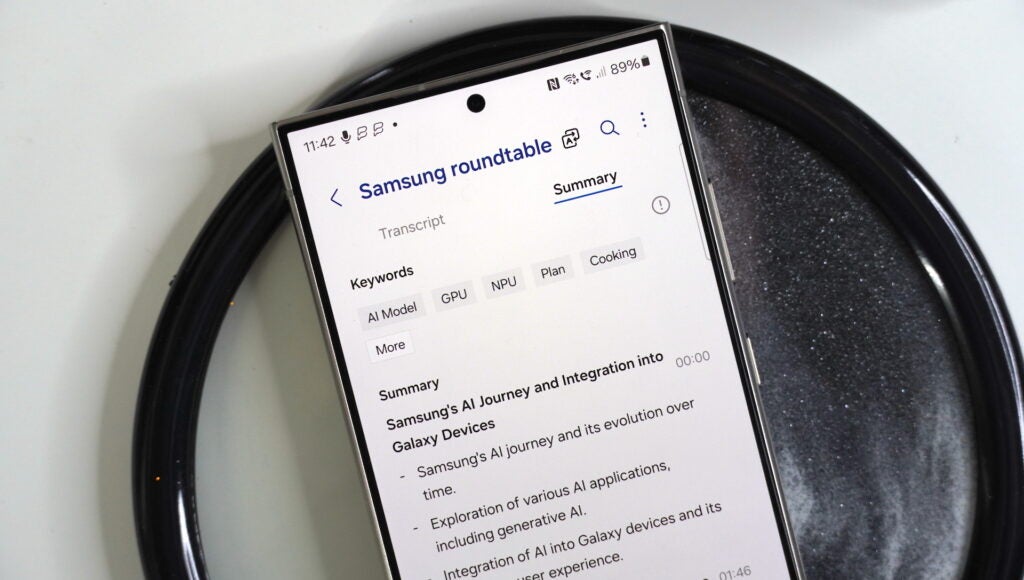Qualcomm has revealed the Snapdragon 8S Gen 3, a new mobile chipset designed for premium smartphones – but how does it compare to MediaTek’s similar Dimensity 8300?
While both smartphone chipsets are focused on a similar segment of the smartphone market – premium devices – the two vary in terms of features and performance.
As such, we’re here to compare the two and help you understand the various differences between the Snapdragon 8S Gen 3 and MediaTek Dimensity 8300 to make a more informed decision when it comes to buying a new smartphone.
Both feature on-device GenAI capabilities
One key feature of both the Snapdragon 8S Gen 3 and MediaTek Dimensity 8300 is the ability to run generative AI tasks entirely on-device without an internet connection.
We’ve seen the results of this manifested at the top-end of the market from Snapdragon 8 Gen 3-equipped phones like the Samsung Galaxy S24, Honor Magic 6 Pro and Asus Zenfone 11 Ultra, all with their own spin on on-device GenAI.
That ranges from on-device transcription and voice transcription from Asus and Samsung, while Honor has taken a more intent-based approach to GenAI, with the phone working out what you want to do next and providing shortcuts where necessary.
We’ve only seen it in top-end flagships so far, so hopefully, GenAI support in both the Snapdragon 8S Gen 3 and MediaTek Dimensity 8300 will bring these features to slightly cheaper smartphones.
However, it’s on phone manufacturers to actually implement GenAI features – chipmakers only provide the means to do so – so even if a phone does come with one of these two processors, AI-powered text and image tools aren’t a given.


The Snapdragon 8S Gen 3 will likely be more powerful
While we can’t say for certain until we benchmark a Snapdragon 8S Gen 3-equipped device, it sounds like it’ll be the more powerful chipset of the two.
That’s mainly due to claims from Qualcomm, which has stated that, in terms of performance, users should expect something ‘between the Snapdragon 8 Gen 2 and Snapdragon 8 Gen 3.’ We suspect it’ll be closer to the former than the latter, but we’ll have to wait to say for certain.
The MediaTek Dimensity 8300, on the other hand, is a step down from the brand’s top-end MediaTek Dimensity 9300, which is found on flagships like the Vivo X100 Pro. That means it’s not quite as powerful despite its GenAI prowess.
Given that the Snapdragon 8 Gen 2 could comfortably compete with last year’s Dimensity 9200, it’s safe to imagine it’ll also be the case with the 8S Gen 3.
Both are designed for the premium smartphone market
Both the Snapdragon 8S Gen 3 and MediaTek Dimensity 8300 are designed for the premium smartphone market, with the Snapdragon 8S Gen 3 described by Qualcomm as ‘servicing devices directly below flagship’.
It’s a relatively new distinction in the world of smartphones, sitting between the mid-range and ultra-premium devices at around the £600-800 mark where phones need to be rapid but not necessarily the fastest on the market.
You won’t see Snapdragon 8S Gen 3 phones for a few months yet
Despite the reveal of the new Qualcomm chipset, you won’t be seeing Snapdragon 8S Gen 3 devices anytime soon.
Unlike with the launch of the Xiaomi 14 in China just days after the 8 Gen 3 reveal, Qualcomm has confirmed that the first 8S Gen 3-powered smartphones won’t appear for a few months yet, and it hasn’t confirmed which phone manufacturers will take advantage of the new chipset either.
The MediaTek Dimensity 8300, on the other hand, is now appearing in smartphones like the Poco X6 Pro having been announced at the latter end of 2023.




